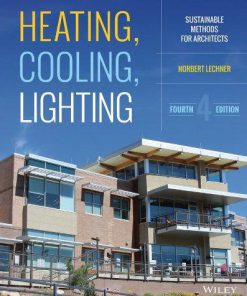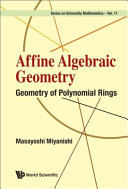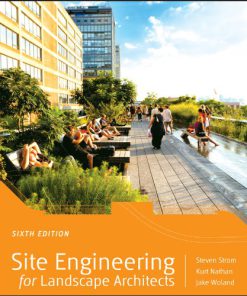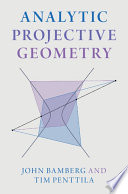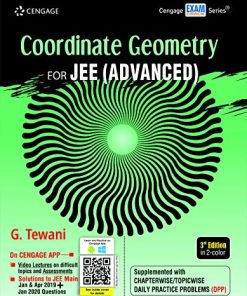Geometry for Naval Architects 1st edition by Adrian Biran 0081003390 9780081003398
$50.00 Original price was: $50.00.$25.00Current price is: $25.00.
Geometry for Naval Architects 1st edition by Adrian Biran – Ebook PDF Instant Download/DeliveryISBN: 0081003390, 9780081003398
Full download Geometry for Naval Architects 1st edition after payment.
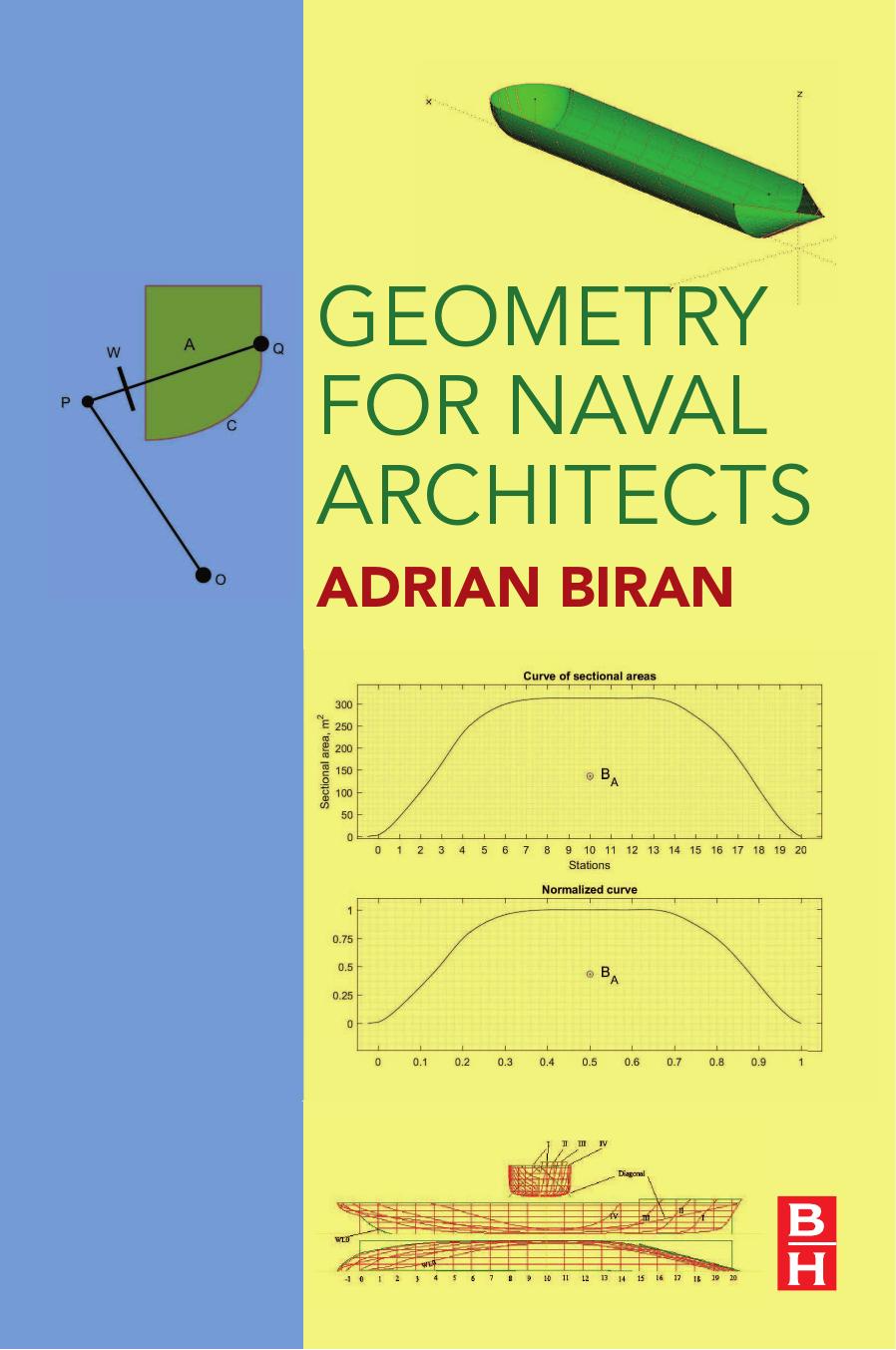
Product details:
ISBN-10 : 0081003390
ISBN-13 : 9780081003398
Author : Adrian Biran
Geometry for Naval Architects is the essential guide to the principles of naval geometry. Formerly fragmented throughout various sources, the topic is now presented in this comprehensive book that explains the history and specific applications of modern naval architecture mathematics and techniques, including numerous examples, applications and references to further enhance understanding. With a natural four-section organization (Traditional Methods, Differential Geometry, Computer Methods, and Applications in Naval Architecture), users will quickly progress from basic fundamentals to specific applications.
Careful instruction and a wealth of practical applications spare readers the extensive searches once necessary to understand the mathematical background of naval architecture and help them understand the meanings and uses of discipline-specific computer programs.
Geometry for Naval Architects 1st Table of contents:
Part 1: Traditional Methods
Chapter 1: Elements of Descriptive Geometry
Abstract
1.1. Introduction
1.2. Notations
1.3. How We See — The Central Projection
1.4. Central Projection
1.5. A Note on Stereoscopic Vision
1.6. The Parallel Projection
1.7. The Orthogonal Projection
1.8. The Method of Monge
1.9. Points
1.10. Straight Lines
1.11. Planes
1.12. An Example of Plane-Faceted Solid — The Cube
1.13. A Space Curve — The Helix
1.14. The Cylinder
1.15. The Cone
1.16. Conic Sections
1.17. What Is Axonometry
1.18. Developed Surfaces
1.19. Summary
1.20. Exercises
Appendix 1.A. The Connection to Linear Algebra and MATLAB
Appendix 1.B. First Steps in MultiSurf
Bibliography
Chapter 2: The Hull Surface — Graphic Definition
Abstract
2.1. Introduction
2.2. The Lines Drawing
2.3. Main Dimensions and Coefficients of Form
2.4. Systems of Coordinates
2.5. The Hull Surface of a Real Ship
2.6. Consistency and Fairness of Ship Lines
2.7. Drawing Instruments
2.8. Table of Offsets
2.9. Shell Expansion and Wetted Surface
2.10. An Example in MultiSurf
2.11. Summary
2.12. Exercises
Bibliography
Chapter 3: Geometric Properties of Areas and Volumes
Abstract
3.1. Introduction
3.2. Change of Coordinate Axes
3.3. Areas
3.4. First Moments and Centroids of Areas
3.5. Second Moments of Areas
3.6. Volume Properties
3.7. Mass Properties
3.8. Green’s Theorem
3.9. Hull Transformations
3.10. Applications
3.11. Summary
3.12. Exercises
Bibliography
Part 2: Differential Geometry
Chapter 4: Parametric Curves
Abstract
4.1. Introduction
4.2. Parametric Representation
4.3. Parametric Equation of Straight Line
4.4. Curves in 3D Space
4.5. Derivatives of Parametric Functions
4.6. Notation of Derivatives
4.7. Tangents
4.8. Arc Length
4.9. Arc-Length Parametrization
4.10. The Curve of Centres of Buoyancy
4.11. Summary
4.12. Exercises
Bibliography
Chapter 5: Curvature
Abstract
5.1. Introduction
5.2. The Definition of Curvature
5.3. Osculating Circle
5.4. An Application in Kinematics — The Centrifugal Acceleration
5.5. Another Application in Mechanics — The Elastic Line
5.6. An Application in Naval Architecture — The Metacentric Radius
5.7. Differential Metacentric Radius
5.8. Curves in Space
5.9. Evolutes
5.10. A Lemma on the Normal to a Curve in Implicit Form
5.11. Envelopes
5.12. The Metacentric Evolute
5.13. Curvature and Fair Lines
5.14. Examples
5.15. Summary
5.16. Exercises
Appendix 5.A. Curvature in MultiSurf
Bibliography
Chapter 6: Surfaces
Abstract
6.1. Introduction
6.2. Parametric Representation
6.3. Curves on Surfaces
6.4. First Fundamental Form
6.5. Second Fundamental Form
6.6. Principal, Gaussian, and Mean Curvatures
6.7. Ruled Surfaces
6.8. Geodesic Curvature
6.9. Developable Surfaces
6.10. Geodesics and Plate Development
6.11. On the Nature of Surface Curvature
6.12. Summary
6.13. Exercises
Appendix 6.A. A Few MultiSurf Tools for Working With Surfaces
Bibliography
Part 3: Computer Methods
Chapter 7: Cubic Splines
Abstract
7.1. Introduction
7.2. Cubic Splines
7.3. The MATLAB Spline
7.4. Working With Parametric Splines
7.5. Space Curves
7.6. Chord-Length Parametrization
7.7. Centripetal Parametrization
7.8. Summary
7.9. Exercises
Appendix 7.A. MultiSurf — Cubic Spline, Polycurve
Bibliography
Chapter 8: Geometrical Transformations
Abstract
8.1. Introduction
8.2. Transformations in the Plane
8.3. Transformations in 3D Space
8.4. Perspective Projections
8.5. Affine Combinations of Points
8.6. Barycentres
8.7. Summary
8.8. Exercises
Bibliography
Chapter 9: Bézier Curves
Abstract
9.1. Introduction
9.2. The First-Degree Bézier Curves
9.3. The Second-Degree Bézier Curves
9.4. The Third-Degree Bézier Curves
9.5. The General Definition of Bézier Curves
9.6. Interactive Manipulation of Bézier Curves
9.7. De Casteljau’s Algorithm
9.8. Some Properties of Bézier Curves
9.9. Joining Two Bézier Curves
9.10. Moving a Control Point
9.11. Rational Bézier Curves
9.12. Summary
9.13. Exercises
Bibliography
Chapter 10: B-Splines and NURBS
Abstract
10.1. Introduction
10.2. B-Splines
10.3. Quadratic B-Splines
10.4. Moving a Control Point
10.5. A Cubic B-Spline
10.6. Phantom Points
10.7. Some Properties of the B-Splines
10.8. NURBS
10.9. Summary
10.10. Exercises
Appendix 10.A. A Note on B-Splines and NURBS in MultiSurf
Bibliography
Chapter 11: Computer Representation of Surfaces
Abstract
11.1. Introduction
11.2. Bézier Patches
11.3. Bicubic Bézier Patch
11.4. Joining Two Bézier Patches
11.5. Swept Surfaces
11.6. Lofted Surfaces
11.7. Computer-Aided Design of Hull Surfaces
11.8. Summary
11.9. Exercises
Appendix 11.A. A Note on Surfaces in MultiSurf
Bibliography
Part 4: Applications in Naval Architecture
Chapter 12: Hull Transformations by Computer Software
Abstract
12.1. Introduction
12.2. Affine Hulls
12.3. A Note on Lackenby’s Transformation
12.4. Affine Combinations of Offsets
12.5. Morphing
12.6. Non-Linear Transformations
12.7. Summary
12.8. Exercises
Bibliography
Chapter 13: Conformal Mapping
Abstract
13.1. Introduction
13.2. Working With Complex Variables
13.3. Conformal Mapping
13.4. Lewis Forms
13.5. Summary
13.6. Exercises
People also search for Geometry for Naval Architects 1st:
naval architect qualifications
geometry symbols name
naval architects near me
geometry for architects
geometry for architecture
Tags: Geometry, Naval Architects, Adrian Biran, naval geometry, various sources
You may also like…
Technique - Fuel Technology
Computers - Computers - General & Miscellaneous
Mathematics - Geometry and Topology
Mathematics - Geometry and Topology
Business & Economics - Project Management
Architects of Assurance: Cloud Compliance for the C-Suite Bhargav Kumar Konidena
Mathematics - Geometry and Topology




